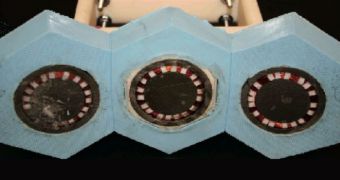The 2010 BP/Deepwater Horizon oil spill that affected the Gulf of Mexico evidenced a major flaw in the design of underwater, autonomous, robotic vehicles, namely that they cannot properly anchor themselves to anything. Recently, experts managed to address this issue in an innovative manner.
Scientists at the Massachusetts Institute of Technology (MIT) say that they have just finished developing a new type of anchoring system, which will enable future underwater robots to firmly attach themselves in place while conducting operations.
This could become very useful for operating on valves, or repairing damaged pipelines. At this point,if a robot applies too great a force on its target, then it carries the risk of pushing itself away from its objective as well.
This is, in part, while operations conducted during the BP incident failed to conclude successfully. Now, the MIT team says that underwater robots can be made not only capable of anchoring themselves properly, but also to remove their hold and move to new destinations, where the process is repeated.
The mechanism they developed is therefore useful for both hooking and unhooking from a support surface. The team described their innovation as a “controllable adhesion system” that can be used on a wide variety of geometries and textures.
In addition, the system only consumes minimal amounts of energy, while providing a very high holding force. It was developed out of materials that can easily withstand the harsh conditions under the waves, and requires only very low amounts of maintenance to keep going.
MIT investigators say that the prototype they created is made up of three individual segments, which do not interfere with each other, and can be controlled independently. This can allow a robot outfitted with the system to attach itself onto a large, underwater pipe, for example.
At this point, the system relies heavily on the use of controllable electromagnets, which means that robots are able to attach only to metal items. The most obvious applications are in repairing pipes and ship hulls.
The most interesting aspect of the anchoring device is that only a short burst of electricity is needed to turn the magnets on or off. This is what enables scientists to use it with minimal power consumption and maintenance requirements.
“We’ve developed a good fundamental understanding and have made some promising prototypes. Now we want to implement our magnetic adhesion system by collaborating with other researchers who are designing robots to perform underwater maintenance and repairs,” says Sangbae Kim.
The expert, who was the leader of the MIT research team, holds an appointment as the Esther and Harold E. Edgerton assistant professor of mechanical engineering at the Institute.

 14 DAY TRIAL //
14 DAY TRIAL //